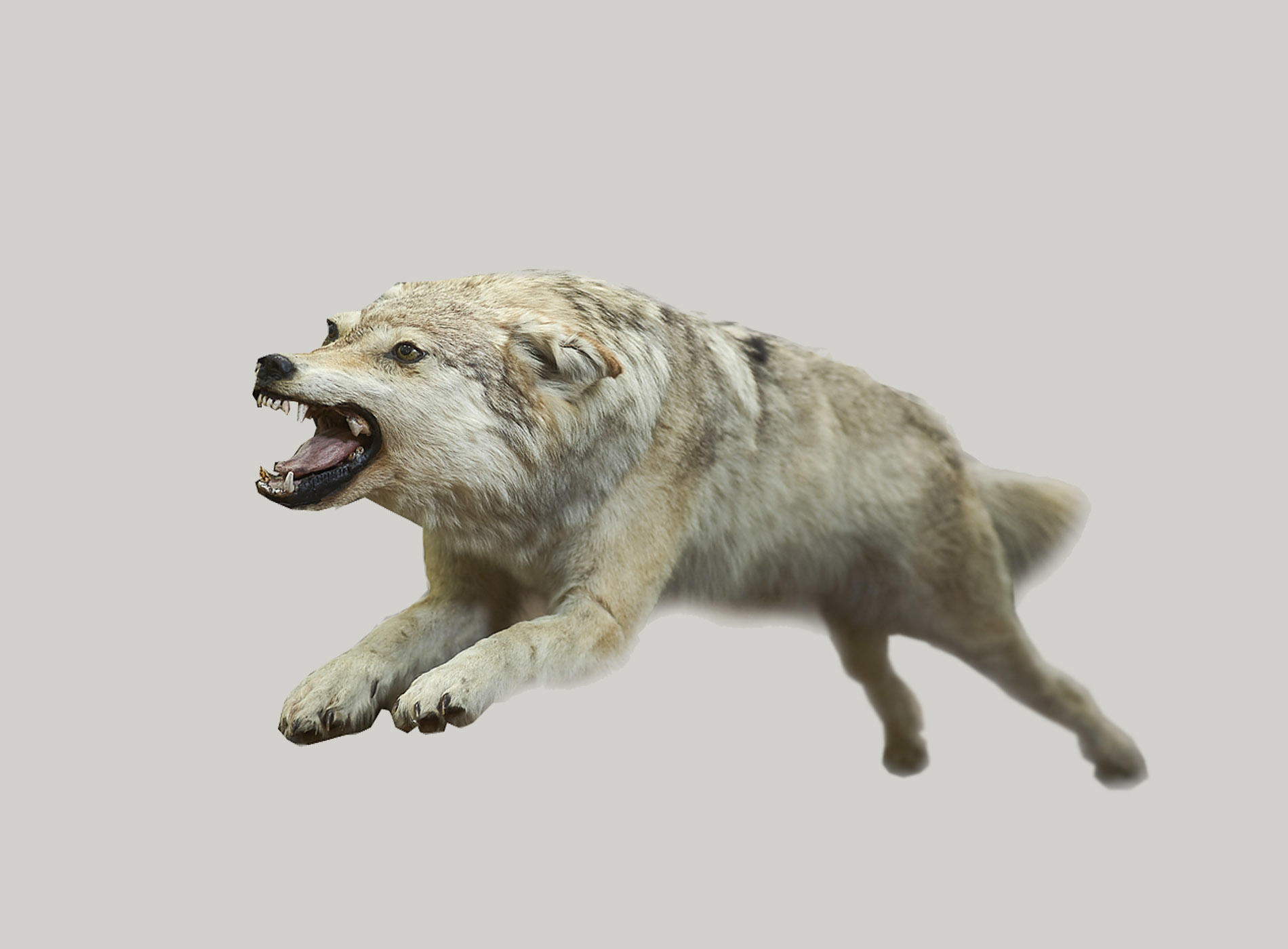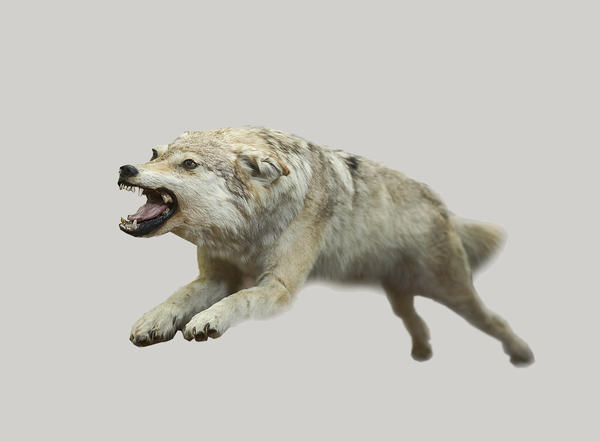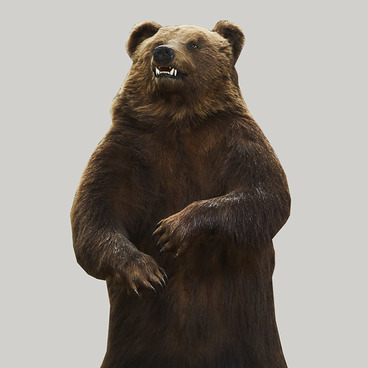There are not so many representatives of the animal world who are shrouded in such a dense layer of legends and superstitions as the ordinary gray wolf. In Russian folklore, only the bear is able to compete with it. It is the largest representative of the big canine family, gregarious predator with a powerful body up to 160 cm long and 90 cm tall. Mature males can weigh up to 70 kg. Its legs are strong, and its pointed ears stick out above its head. Its thick long coat repels water; the undercoat does not get wet and can store heat for a long time. Its cheeks are noticeably lighter, and its eyes are framed by white spots. Gray wolf has 42 teeth in its mouth, with four formidable fangs on the sides of strong jaws. The beast is able to bite through the thickest skin of any prey with those fangs.
Wolves are monogamous and loyal to each other all their lives. In summer, they live in separate dens, feeding and raising puppies. In winter, they unite in hordes for group hunts. The wolf pack is led by the most experienced and strongest male; his female stays inseparable with him. Wolves pave the way in deep snow in turns, giving rest to those tired. They chase their prey until it is exhausted. When it falls, the flock finishes it off. A horde can include 20-30 wolves.
A horde usually includes the alpha male and his mate, several younger wolves from other families, outbreaks, that is, last year’s puppies, and very small puppies. From time to time, the leader and his mate fight for dominance in the pack with younger wolves. During the mating season, lonely sexually mature males in search of mates can invade hunting grounds of other packs where they fight for females and a place in the hierarchy. Thanks to this practice, wolves do not degenerate due to closely related bonds and keep their own gene pool intact.
The strong point of a wolf pack is its rigid unquestioning hierarchy and its developed communication system in the form of howls. Sounds made by wolves can be heard 10 km around. Their timbre is individual; wolves recognize each other by their voices, distinguishing signals of general gathering, pursuit, or danger. In many European countries, these sounds are no longer audible, as wolves have been destroyed without exception for the sake of saving herds of sheep and cows. Only then people figured out that wolves were not just predators, but “forest body snatchers” who used to destroy sick and weak animals. However, in Siberia, gray predators still sing on moonlit nights, as they did thousands of years ago.
Wolves are monogamous and loyal to each other all their lives. In summer, they live in separate dens, feeding and raising puppies. In winter, they unite in hordes for group hunts. The wolf pack is led by the most experienced and strongest male; his female stays inseparable with him. Wolves pave the way in deep snow in turns, giving rest to those tired. They chase their prey until it is exhausted. When it falls, the flock finishes it off. A horde can include 20-30 wolves.
A horde usually includes the alpha male and his mate, several younger wolves from other families, outbreaks, that is, last year’s puppies, and very small puppies. From time to time, the leader and his mate fight for dominance in the pack with younger wolves. During the mating season, lonely sexually mature males in search of mates can invade hunting grounds of other packs where they fight for females and a place in the hierarchy. Thanks to this practice, wolves do not degenerate due to closely related bonds and keep their own gene pool intact.
The strong point of a wolf pack is its rigid unquestioning hierarchy and its developed communication system in the form of howls. Sounds made by wolves can be heard 10 km around. Their timbre is individual; wolves recognize each other by their voices, distinguishing signals of general gathering, pursuit, or danger. In many European countries, these sounds are no longer audible, as wolves have been destroyed without exception for the sake of saving herds of sheep and cows. Only then people figured out that wolves were not just predators, but “forest body snatchers” who used to destroy sick and weak animals. However, in Siberia, gray predators still sing on moonlit nights, as they did thousands of years ago.



